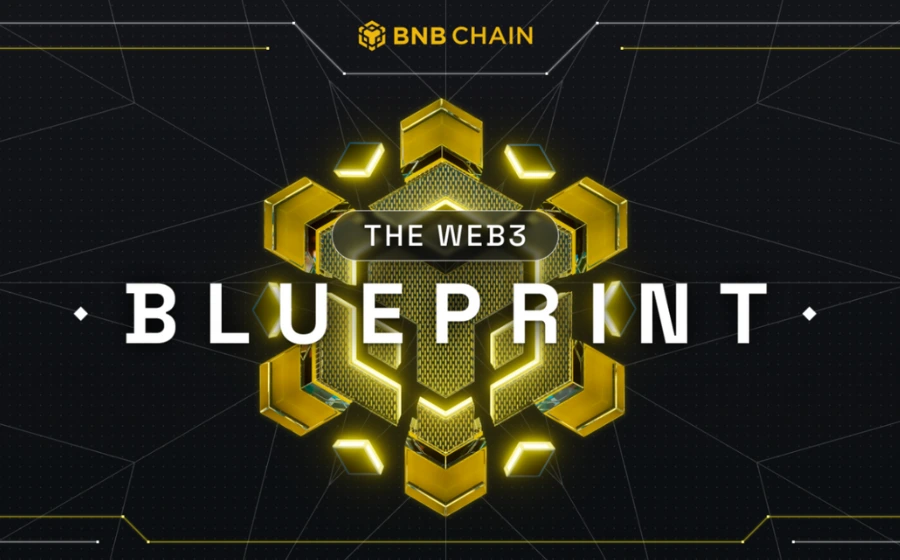
KEYTAKEAWAYS
- Cryptocurrency investments offer high returns but come with significant risks and potential for scams, such as Ponzi schemes and fake ICO projects.
- To avoid scams, it is crucial to conduct thorough due diligence on the investment target, including background checks on team members and business models.
- Always verify the legitimacy of crypto addresses and sources before sending funds, and consult multiple experts if any suspicious activities arise.

CONTENT
*This article was originally published in Chinese and on the Blog- Code and law.
This article discovers how to navigate the cryptocurrency market safely. Readers can learn about common scams and essential tips for novice investors to avoid fraud and protect your investments
INTRODUCTION
Following the approval of the Bitcoin ETF by the US SEC, it is foreseeable that other countries and regions will gradually open up and allow local financial institutions to provide more channels to help “virtual asset” novices enter this market. However, as a new investor in crypto assets, you might wonder if it’s possible to invest independently without going through financial institutions or if there are other opportunities besides Bitcoin. As a beginner in the cryptocurrency market, it is often necessary to pay attention to risks other than investment.
Since Bitcoin’s development in 2008, along with the growth of the blockchain industry and the soaring value of Bitcoin and other crypto assets (such as Tokens and NFTs), it has attracted many speculators and criminals. Due to the early development nature of the blockchain industry and the high returns brought by high risks, it cannot be denied that this industry also contains some gray areas, leading to issues such as information gaps and asymmetry. Consequently, various types of crypto asset scams have emerged, causing countless investors to lose their money.
Take the infamous PlusToken case, for example, where the scheme claimed to be a cryptocurrency wallet and investment plan, attracting a large number of investors from China and South Korea. The project promised to distribute profits to investors from trades made on exchanges. However, in reality, PlusToken had no legitimate investment activities. It was a classic Ponzi scheme, where the funds from new investors were used to pay the “profits” to earlier investors. Thus, if you were a late investor, you would not receive any returns unless new investors joined to pay the earlier ones. This scam lasted about a year and collected approximately $3 billion worth of Bitcoin, Ethereum, and other cryptocurrencies. Eventually, the group behind PlusToken fled overseas in mid-2019, leading to the collapse of the entire system, leaving about 800,000 investors with nothing.
Other cases include BitConnect, which promised annual returns of 40% through “trading bots” and “mining services,” and Wotoken, which claimed investors could earn tokens through Gamefi. These crypto asset scams come in various forms, but they all follow a similar pattern — attracting investors with promises of extremely high returns. These scam groups embezzle investors’ funds without any real investment, aiming only to steal the investors’ principal. Consequently, victims not only suffer significant financial losses but also lose confidence in the industry.
In light of this, this article will reveal common types of cryptocurrency scams, analyze their fraudulent methods, and provide practical advice for novice investors in the cryptocurrency market. The goal is to help everyone increase their risk awareness, avoid falling into scam traps, and truly enjoy the excitement of investing in technological advancements.
6 COMMON TYPES OF CRYPTOCURRENCY SCAMS
1. Ponzi Scheme
This type of scam typically promotes an extremely attractive investment concept or profit model, promising returns of up to 40% or even higher annually (such as PlusToken, BitConnect, etc.). Through exaggerated and false advertisements and “cash flow” proofs, it attracts a large number of investors to deposit funds. In reality, these schemes have no genuine sources of profit; they simply use the funds from later investors to pay earlier investors, forming a typical “rob Peter to pay Paul” cycle. To keep the scheme running, the fraudsters need to recruit new members and new sources of funds continuously. Once the influx of new members slows down, the entire system’s cash flow breaks down, making it impossible to pay the “profits,” at this point, the Ponzi scheme collapses rapidly, causing most investors to suffer significant losses.
2. Fake ICO Projects
Another common scam model involves exploiting the ICO (Initial Coin Offering) model, which gained popularity in 2017. The ICO model is a popular crypto asset fundraising method, where investors’ Bitcoin or Ethereum—cryptocurrencies with high liquidity and market value—are collected, and a project is promised to be developed, along with a set of tokens linked to the project. If the project develops successfully, the token value grows as well. Fake ICO scams take advantage of this model. Typically, they introduce a so-called new blockchain or crypto asset project, spending most of the funds on advertising to attract investors to pre-purchase related tokens or crypto assets. Once investors deposit their funds, the project shuts down and disappears without fulfilling its promises, thereby swindling large amounts of Bitcoin, Ethereum, or USD-pegged stablecoins. Some fake projects may even be delayed indefinitely or never actually develop anything, relying on persuasive language and forged technical white papers to deceive the public through extensive advertising. This type of scam closely resembles legitimate investments, making a thorough investigation of the technical team and the background knowledge of the involved personnel crucial. Additionally, it is wise to avoid investing large amounts of money in such projects.
3. Fake Cryptocurrency Trading Platforms
These scammers imitate legitimate cryptocurrency exchanges and create what appear to be professional fake platform websites, claiming to offer various crypto asset trading services, such as crypto lending or robot investing. Once investors open an account on the platform and deposit funds or crypto assets, the platform allows normal withdrawals or provides promised returns in the short term to gain the investors’ trust. However, once a large amount of funds has been deposited, the platform suddenly shuts down or restricts users’ withdrawal amounts, demanding that users pay a certain fee (in crypto or cash) to unlock the withdrawal limits. In worse cases, they directly embezzle the funds. Identifying such scams can be challenging, so it is better to choose licensed platforms that comply with regulatory oversight or local exchanges where responsible parties can be more easily identified. However, users should still be cautious and carefully select qualified exchanges.
4. Fake Mining/Investment Schemes
Due to Bitcoin’s blockchain network consensus mechanism being Proof of Work (POW), participants (miners) are rewarded for contributing computing power to maintain the ledger’s stability. This process is commonly referred to as “mining.” Mining scams entice investors to believe that the planners are organizing so-called cloud mining projects. By paying a small fee or funds to the planners, investors can participate in these “cloud mining” services or “quantitative investment” projects, supposedly earning substantial returns. However, in reality, the planners do not have any genuine mining equipment or quantitative trading systems; they merely scam investors out of their money. Sometimes, they may temporarily pay out small returns in a Ponzi scheme to maintain the illusion of profitability.
5. Impersonation Marketing Scams
Cryptocurrency transactions usually require wallet addresses. In this scam, fraudsters focus on the social messages of well-known teams or KOLs in the crypto world and then impersonate these famous wallet service teams or founders on social media (such as Facebook or Twitter). They post related messages and provide a specific wallet address, claiming that users can receive services or certain benefits from the impersonated team by paying fees to the given wallet address. However, this address is fake (controlled by the scammers), and once investors transfer funds, the scammers disappear with the money without providing any actual services, similar to traditional phishing scams in cybersecurity.
6. Fake Airdrop/Giveaway Scams
With the surge in cryptocurrency prices, many new projects conduct marketing activities like “airdrops” or “free token giveaways” to gain exposure. Some scammers exploit these opportunities by impersonating new projects to commit fraud. They post airdrop announcements on social platforms or forums, or impersonate well-known crypto projects or personalities, claiming that investors can receive a large number of tokens for free by completing simple tasks, such as sharing the post and paying a certain fee to the crypto address in the post. However, there is no real airdrop plan, and the goal is to steal participants’ cryptocurrencies and trick more people into falling for the scam.
5 TIPS FOR DETECTING SCAM MODELS
1. Be Skeptical of Projects that Promise “Principal Protection”
Since the world of crypto assets is still in its early stages, choosing the right investment targets can sometimes yield high returns. However, despite high returns, investments are inherently linked to high risk. Therefore, any project that claims to offer “principal protection,” “no risk,” and simultaneously promises extremely high annual returns are almost certainly fraudulent. Why is this the case? Because in the field of investment and finance, no legitimate investment can maximize profits while maintaining zero risk. Excessive promises often imply hidden risks or, more directly, the purpose of such claims is to persuade users to hand over their “investment principal.”
2. Due Diligence on the Investment Target (such as Background, Team Members, and Business Model)
As an investor, before investing your principal, you should carefully examine whether the project’s “business model” is reasonable—specifically, how it makes money and who the clients are paying money to this model. Ensure there is a genuine and feasible business model or technical support behind the project’s development. Conducting thorough due diligence is a crucial step in avoiding scams. This involves investigating the team’s background, verifying the real identities and professional backgrounds of team members, and ensuring that they are genuine and, if necessary, can personally explain their project. Additionally, as the most basic step, you should thoroughly read the project’s whitepaper to understand its authenticity. This will help you grasp the specific details of its business model, confirming whether it has feasibility and genuine sources of revenue.
3. Be Cautious with Fund Deposits and Withdrawal Processes
As previously mentioned in the context of fake cryptocurrency trading platform scams, these scams often involve various investment schemes and methods, offering users small benefits to entice them to invest larger amounts in the future. Therefore, investors should choose licensed and transparent cryptocurrency exchanges. When using an exchange for the first time, start by testing with a small deposit and withdrawal to ensure the process is smooth before considering investing larger amounts. Additionally, pay close attention to any withdrawal restrictions, such as minimum withdrawal amounts, to avoid falling into traps where large amounts of funds are locked and cannot be withdrawn easily.
4. Do Not Send or Pay to Unknown Sources or Addresses
Regarding the previously mentioned scam models, such as impersonation marketing or fake airdrop activities, users should pay special attention to whom they are contacting and to whom they are sending cryptocurrency. Always verify the correctness of the links or crypto addresses. Even if someone claims to be an official member of a well-known project, be extremely cautious if they ask you to pay fees or transfer funds to a specified address. Unless confirmed by multiple authoritative sources, never send cryptocurrency or funds to any unknown sources or addresses.
5. Stop Immediately and Verify with Multiple Experts when Encountering Suspicious Situations
Once, during the investment process, you notice discrepancies between the project’s promises and its actual operations, delays in payouts, or a large number of investors cashing out, stop increasing your investment immediately and do not blindly follow the instructions of the other party. Seek assistance from professional institutions and legal departments to prevent further losses. Additionally, do not rely on the verification of a single expert, as the first contact a novice investor makes is often a scammer posing as an expert or “your crypto friends”. Therefore, novice investors should verify information from multiple sources or experts to avoid being deceived by someone they believe to be an expert. Even if there are no other experts around, you can look up information online and verify it within related investor communities, widely seeking opinions and experiences from others in the investor community.
SUMMARY
In conclusion, as the cryptocurrency and blockchain industries continue to develop, we can expect related regulations to become clearer. However, cryptocurrency remains an early-stage industry with many risks and incomplete regulations. Due to the lack of transparency, various illegal activities still exist in this field, especially the numerous fraud schemes.
Scams are invariably based on promises of extremely high returns or guaranteed principal protection, or they spend a lot on marketing to convince investors. Some even get endorsements from so-called experts. These costly efforts aim to lure investors into handing over their principal. Investors, tempted by the promise of easy and convenient profits, can easily fall victim if they do not further verify or understand the source of the profits. Even seasoned crypto investors can be caught off guard, as seen with the FTX exchange, which had internal control issues and cases of fraud and misuse of user funds. Therefore, we must urge all investors, whether veterans or beginners, to increase their risk awareness, maintain a rational attitude towards the crypto market, acknowledge the existence of scam risks, and master the skills to identify scam traps to reduce their investment risks.
For beginners, in addition to the aforementioned types of scams and 5 tips for identifying scams to help recognize potential fraudulent projects, the most sincere advice is to remember that “making money too easily” is a warning sign. Even though the crypto market offers relatively high returns compared to traditional financial markets, the fundamental logic of investing and earning returns remains the same. Beginners are advised to do their homework and understand the technology before investing.















